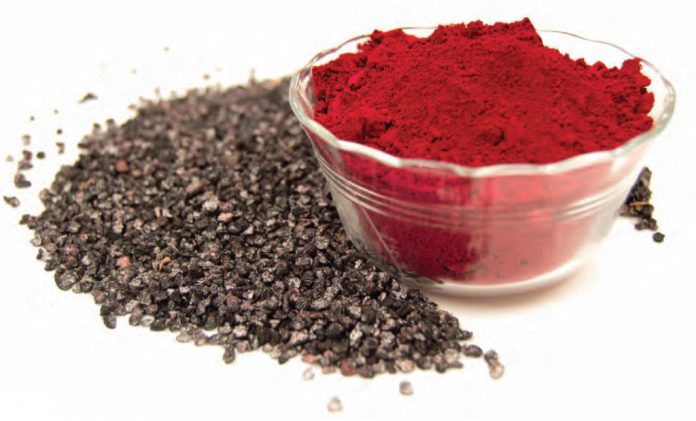Episode XXXVI
Article by Etnia Nativa
WhatsApp us 592 2702 and book your Aruban experience! Etnia Nativa is close to high rise Hotels


Aruba and the Cochineal bug
Worlds ancestral pigment farmers of the Americas cultivated a vegetarian insect that offers a high quality dye for animal, vegetal or synthetic fibers and fabrics, food preparation, pigment used in watercolor and oil paint and a market commodity. Carmine is a natural, animal coloring applied in the manufacturing of pharmaceutics and cosmetics such as lipstick. The pigment carries the number E120. In cosmetics the substance number is CI 75470. Carmine has a crimson reddish color.

Carmine farming seems to pre date the Inca’s and Aztecs. The Spanish conquistador Hernán Cortés probably took this substance with him on his journey back to Europe. However not until 1549 a full description of this substance dye etc. was described by Mathioli.

The insects are known as cochineal tick (Coccus-cacti) and they thrive on cactus plants, especially prickly pears or tuna`s (Opuntia spp.).The insect when full grown, gives off a reddish or carmine dye when crushed. For this purposes it is set out on the Nopal cactus, Tuna spañó (Nopalea Cochenille or Dactyolopius) The tiny tick eats by extracting juice of the cactus and matures. Then it is harvested and slightly sundried. One pound (1 lbs.) of color holds about 70.000 ticks. From this crushed or leached in alcohol a dye is obtained called Cochineal Red.

Native industry was yet to be developed. A Frenchman Manuel Avril took the Cochineal- farming from Mexico to Guadeloupe and Martinique. Cochineal was mentioned to have tried this on Aruba in the years 1835. By the year 1837 under orders of Reinier F. Baron Van Raders the Dutch Majesty`s brig Echo was send to proceed to the islands in order to study this culture. The government assigned areas of cultivation, such as Socotoro, Companashi, Mon Plaisir, Sividivi, Canashito, Quivarco. In Savanata and Sabana Grandi, Sta. Cruz. In Noord close to Shaba,
Cunucu Abao, Pos Abao, Tanki Flip, Tanki Leendert and Ponton. Remarkable was the implementation of a few other local plants in order to improve production. These where the leaves of the Catashi or Loki Loki tree (Phyllanthus botryanthus) that were rolled up into a cone shape which locals used to call “cartuchi ” or “peperesh “. The cocoon served as a parasol, umbrella and a wind shade at the same time against the elements. This was pinned in the cactus by using a thorn of a Cadushi ( Lemaireocereus griseus). 
In Sabana Grandi there used to be some six tomb ruins of a Dutch family with the name of Strakbein, who farmed the Cochineal bug in this area. It was an exhausting work. Soon after the aloe, another introduced plant, the cultivation of the bug began taking over in these experimental plantations. When in 1857 the Aniline dye was commercialized in Germany, the Cochineal commercial value plunged and by the year 1867 local cultivation disappeared completely.

The government in the Netherlands wanted to promote the breeding of the Cochineal bug on the Leeward Islands. The women were taught how to treat the insect with soft cactus-spines and after how to collect them in paper bags. One could make five guilders a pound when the industry was flourishing which was a good income for that time.
Warning: side effects

There are a few cases where the effect of hyperactivity is induced in small children. Also skin contact with cosmetic containing the dying agent can induce allergies. As pigment it is known to produce severe allergies reactions and anaphylactic shock in persons professionally in contact with its production. The pigment is used also to give vegetarian beef that all natural beef color in has imitating meat.
Discover an Aruba which no other could share with you. Discover and explore and take your experience home with you. Our renowned native-educative session has been entertaining curious participants for decades. Mail us at etnianativa03@gmail.com to confirm your participation. Our facilities and activities takes place close to your hotels area. 















